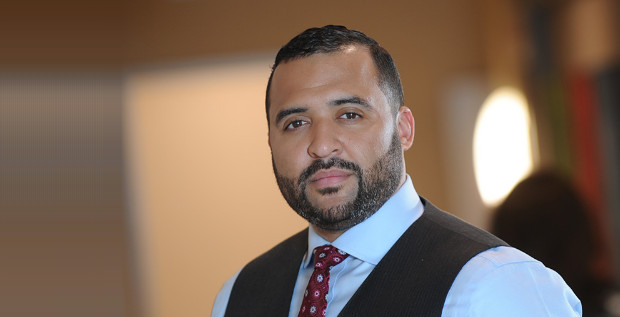Michael Spinosa is the CEO of Unleashed Technologies, an enterprise web and hosting—what the company calls “Wosting”—firm headquartered in Columbia, Maryland. Unleashed Technologies offers a comprehensive array of hosting, development, and design services that span ecommerce, mobile, and cloud technologies. The company specializes in serving publications, franchises, and private and military nonprofits, among other clients. Unleashed Technologies made the Inc. 5000 list in 2013 and 2014, and this year, SmartCEO named the organization one of its 2015 Future 50 award winners.
Michael Spinosa spoke with citybizlist founder Edwin Warfield for this interview.
EDWIN WARFIELD: When did you start Unleashed Technologies? Was it a success initially?
MICHAEL SPINOSA: Unleashed Technologies was founded in 2007. During that time—we came to about 2009—and what we had realized as an organization, just a very small tight-knit group of individuals at that time, was that we were average. We were very vanilla. We were a 6/10—we rated ourselves on what we are. We made a decision at that point—Drupal had just been very popular with its sixth version—and we said, “How can we actually just create a product that’s so fantastic for people that they feel like that there’s no replacing, that this is the way to go?” We looked at open source [technologies], and we said, “Drupal is so flexible and has so many integration capabilities it can serve a midsize and an enterprise market—let’s take a look at that.” I’d say about a month later we made the definitive decision to switch 100% to open source and, particularly, to Drupal at that time. Making that decision has been one of the best decisions that we have ever made as an organization. It’s fueled unbelievable growth for our clients, and I think that’s what really matters.
Has that vision evolved over time?
One of the interesting parts about Unleashed Technologies is once we figured out the direction that we wanted to go, we said we’re going to stay in that direction, and we’re going to really hold true to it. Over the course of the year, we won [Drupal’s] Website of the Year. One year I believe we won four or five Blue Drop Awards—I think we had actually won six, but they told us that we couldn’t have all six, because if we had all six, the award ceremony would like it was fixed. I’ll never forget that discussion, because we had legitimately won all of the awards. In the following years, we won Best Association Website. We’ve won Website of the Year two years in a row, and that has been an amazing honor and a testament to the staff on picking this direction and going forward with it. And it’s expanded. It’s really grown from there.
Can you describe how your technology works for a client? What platforms do you use, and how do they set the company apart?
From a Drupal perspective, using those PHP platforms, Drupal 8 will be on a new platform called Symphony 2, where they’ll use the toolset. So, now, we do Symphony 2, Magento, WordPress, and Drupal. All these combined are what we call PHP derivatives. They’re all built on the same programming language and share a common thread. We’re able to go a mile deep where most people can only go an inch deep.
One of the big challenges in web today is before, it only took a web designer and a web developer to put something up, and you met the expectations of the world. Well, now, every time a large corporation releases the next best greatest thing, every website across the country— across the world—is expected to meet that new level, that new standard. Consumer demand and expectation is only rising. So, what does that mean to people? Well, instead of having a designer and developer now, you have a front-end developer, you have a web designer, you have a back-end developer, you have a solutions architect, an engineer; you have all these people that have to come together to create a special or something engaging for your particular organization. The growth package allows you to have access to all those people in the amount of time that you need without hiring six or seven people and having a budget of half a million dollars.
Can you tell us more about the growth package?
A lot of people, when they think about web, they think about projects; they think about small scopes of work, time and materials, different ways to do those things. We said, “Where can we make a real change?” Because the first part you do is you put a pin in a map and you draw a five-mile radius and you say, “There’s 30 competitors that are doing something very similar.” There’s tons of options out there. So, how do you truly differentiate something besides saying, “Oh, you know, we get to know your business?” Well, it’s nothing more to this point. The way we decided to do it is in the way that it’s delivered. Our growth package is focused on how fluid the web is. The web is always in motion, it’s always changing. And what we realized for people to have successful web presence is they needed to be constantly maintaining them, constantly enhancing them, new features, just keeping it up to date and making that a sustainable annuity.
So, on growth packages, you basically work with us, month in, month out for a said amount of time—whether it’s 20 hours, 40 hours, 80 hours, 160 hours—and it also comes with a service level agreement. Another big failure of web firms out there is they’re inconsistent with their deliverables, the timing of their deliverables. We said, “We’re going to deliver to you every time, on time, in a service level agreement that says these are the hours that you have for a month, and we’re going to get things done for you.” That’s been very successful, and that is what the growth package is.
What makes a website great, in your opinion?
What really makes a website great is understanding the best practices aren’t defined as some general blanket that falls across everything. What makes a really tremendous web presence is that you’re able to identify each company in its own vertical and make it completely custom to what that target audience is seeking. That is really what makes it special. We use best practices or A-plus like some kind of standard that everyone needs to meet, and, at the same time, we don’t really know what that is. We know what we mean by “W3C compliance” by different compliancies out there about development practices, but we don’t know what it means to an individual company until we are able to define the metrics of success. So, you say A-plus. I say, “Show me the client and let me get involved,” because then we have to decide what A-plus really is.

















